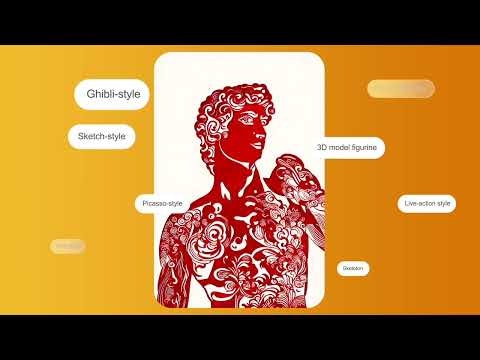Table of Contents
Overview
In the rapidly evolving landscape of AI, multimodal models are becoming increasingly crucial. Enter BAGEL, a groundbreaking open-source unified multimodal model developed by ByteDance-Seed. This powerful tool integrates text, image, and video understanding and generation within a single architecture, offering a versatile solution for a wide range of applications. With 7B active parameters (14B total), BAGEL is making waves in the AI community, outperforming other open-source models in complex tasks. Let’s dive into what makes BAGEL a game-changer.
Key Features
BAGEL boasts an impressive array of features that set it apart from the competition:
- Unified Multimodal Understanding and Generation: Seamlessly integrates text, image, and video modalities, allowing for comprehensive understanding and generation across different data types.
- Mixture-of-Transformer-Experts (MoT) Architecture: Leverages a sophisticated MoT architecture to efficiently process and generate high-quality multimodal content.
- Supports Text, Image, and Video Modalities: Handles a diverse range of input and output formats, making it adaptable to various applications.
- Advanced Image Editing and Generation Capabilities: Enables sophisticated image manipulation and creation from text prompts, opening up new possibilities for creative content generation.
- Open-Source Under Apache 2.0 License: Provides developers with the freedom to customize, modify, and distribute the model, fostering innovation and collaboration.
How It Works
BAGEL’s architecture is designed for efficient multimodal processing. It employs a decoder-only architecture with a Mixture-of-Transformer-Experts (MoT) mechanism to handle interleaved text, image, and video data. The model utilizes separate encoders for pixel-level and semantic-level features. This allows it to perform tasks like text-to-image generation by understanding the semantic meaning of the text and translating it into corresponding pixel arrangements. Similarly, for image editing, it analyzes both the pixel-level details and the semantic content of the image to make precise and context-aware modifications. This dual-encoding approach is key to BAGEL’s versatility and performance.
Use Cases
BAGEL’s capabilities extend to a wide range of applications:
- Image and Video Generation from Text Prompts: Create stunning visuals from simple text descriptions, perfect for content creation and artistic expression.
- Semantic Image Editing: Modify images based on semantic understanding, allowing for targeted and context-aware edits.
- Multimodal Content Understanding: Analyze and interpret content that combines text, images, and videos, enabling more comprehensive data analysis.
- 3D Manipulation and World Navigation Tasks: Explore advanced applications in 3D modeling and virtual environment navigation, pushing the boundaries of AI capabilities.
Pros & Cons
Like any powerful tool, BAGEL has its strengths and weaknesses.
Advantages
- High Performance in Multimodal Tasks: Excels in complex tasks involving text, images, and videos, delivering superior results.
- Open-Source and Customizable: Offers developers the freedom to adapt and improve the model for specific needs.
- Supports a Wide Range of Applications: Versatile enough to be used in various fields, from content creation to robotics.
Disadvantages
- Requires Substantial Computational Resources: Demands significant processing power, potentially limiting accessibility for some users.
- May Have a Steep Learning Curve for Deployment: Implementing and fine-tuning the model may require specialized knowledge and expertise.
How Does It Compare?
When compared to other open-source multimodal models, BAGEL stands out. Specifically, when pitted against Qwen2.5-VL, BAGEL offers superior multimodal reasoning and generation capabilities. Furthermore, it outperforms InternVL-2.5 in standard multimodal understanding benchmarks, solidifying its position as a leading solution in the field.
Final Thoughts
BAGEL represents a significant advancement in the field of multimodal AI. Its unified architecture, impressive performance, and open-source nature make it a valuable tool for researchers, developers, and creators alike. While it requires substantial computational resources and may present a learning curve for some, the potential benefits of BAGEL are undeniable. As the AI landscape continues to evolve, BAGEL is poised to play a key role in shaping the future of multimodal understanding and generation.
